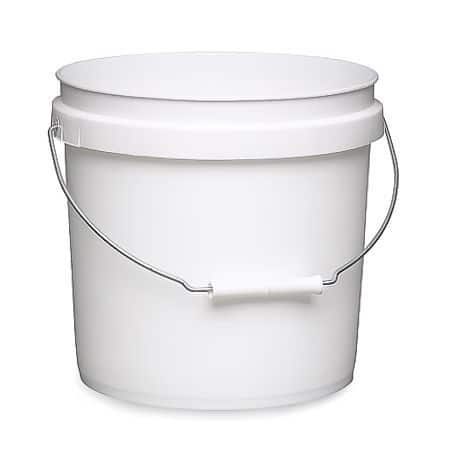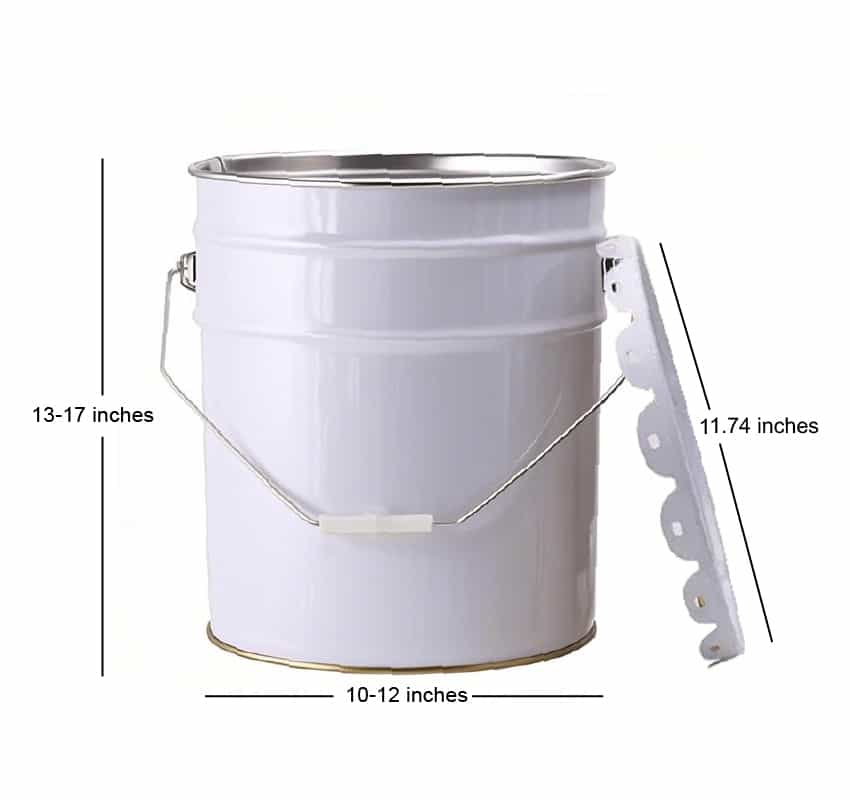You might not give it much thought, but the 5-gallon bucket is seriously one of the most handy things around. Whether you’re painting a room, mixing concrete, or hauling dirt in the garden, this bucket shows up everywhere. It’s simple, but knowing a bit more about its size and weight can actually save you a lot of hassle.
If you’ve ever wondered exactly how big these buckets are, how heavy they get when full, or just how many it would take to fill something as big as a cubic yard, you’re in the right place. Let’s break it down in plain, straightforward terms.

What Are the Typical 5 Gallon Bucket Dimensions?
So, what does a 5-gallon bucket actually look like? Most of them are pretty similar. Think about a bucket that’s roughly 14 and a half inches tall. The top is almost a foot across, about 11.9 inches, while the base narrows down to just over 10 inches.
That slight taper makes stacking easier and helps when you’re pouring or carrying. These measurements might seem small, but they’re important. They help you figure out how many buckets you can fit in your truck or how much room you’ll need to store them neatly. This is why knowing the 5 Gallon Bucket Dimensions upfront is so useful.
How Heavy Does a Full 5-Gallon Bucket Get?
Empty buckets don’t weigh much, usually just a couple of pounds if they’re made from plastic. But once you fill one up, the weight adds up quickly.
If you fill it with water, expect the whole thing to tip the scales at around 42 pounds. Paint buckets? Those can be heavier, depending on the type. Latex paint usually runs about 50 to 55 pounds per full bucket, while oil-based paints or thicker industrial coatings can push 60 pounds or more.
That’s why understanding the 5 Gallon Bucket Weight is important, it helps you avoid lifting something too heavy and keeps your project safe and manageable.

How Many 5-Gallon Buckets Are in a Cubic Yard?
Here’s a question that comes up a lot: How Many 5-Gallon Buckets Are in a Cubic Yard? This is key if you’re working with materials like soil, mulch, gravel, or concrete.
One cubic yard equals 27 cubic feet. Since a 5-gallon bucket holds about two-thirds of a cubic foot (0.6685 to be exact), you’d need just over 40 buckets to make up a cubic yard.
So next time you’re planning a big project and see materials sold by the cubic yard, you can picture it in buckets. It makes measuring way more tangible and less confusing.
Where Does This Info Come in Handy?
If you’re mixing concrete, having a clear idea of how many buckets you’ll need saves you from running back and forth or ordering too much. It helps keep your mix consistent and your project on track.
Painters will appreciate knowing bucket weight when loading up the truck or carrying supplies around a site. And gardeners or landscapers can use these measurements to divvy up soil or mulch without guesswork.


Why Size and Weight Matter
Bucket size affects how you store and transport them. If you don’t know the dimensions, you might find yourself trying to cram buckets into a space where they just won’t fit.
Weight plays a big role in safety, too. Carrying a bucket that’s too heavy or stacking too many on a shelf without checking can cause injuries or damage. Knowing what you’re dealing with keeps your workspace safe and efficient.
Breaking Big Volumes into Buckets
Sometimes it’s easier to think in buckets than in abstract volumes. Instead of eyeballing cubic yards or cubic feet, you can count buckets. It’s a practical way to plan, especially if you don’t have heavy equipment.
Whether you’re hauling gravel or mixing up some concrete, breaking it down bucket-by-bucket makes the job feel manageable, and that’s always a good thing.
Wrapping It Up
The 5-gallon bucket might be basic, but it’s a workhorse in so many fields. When you have a clear understanding of its size, weight, and volume capacity, you’re set up to tackle projects more confidently and efficiently.
Next time you’re staring at a pile of material or a stack of buckets, you’ll know exactly what you’re working with, and that can make all the difference.
- 0shares
- Facebook0
- Pinterest0
- Twitter0


